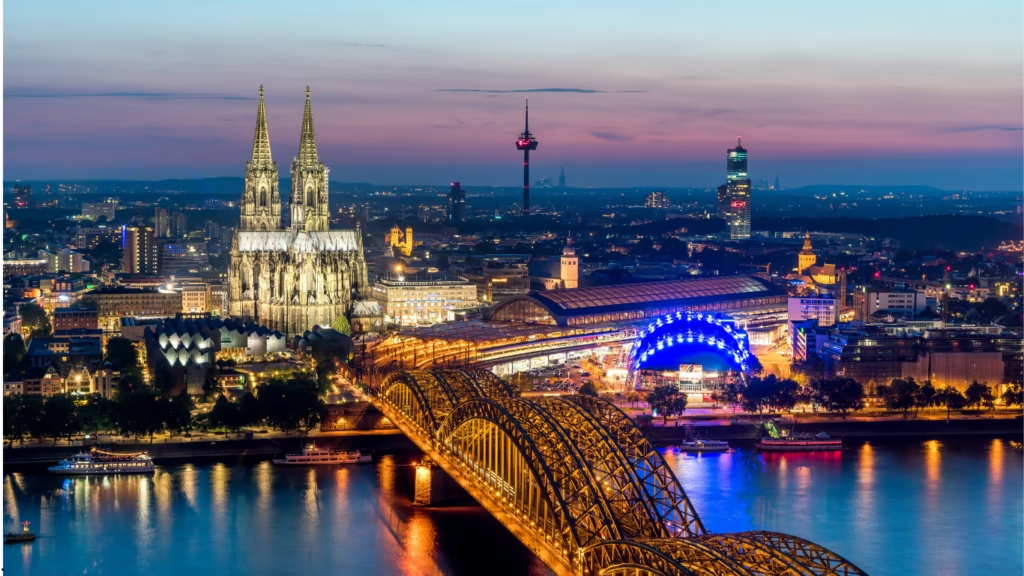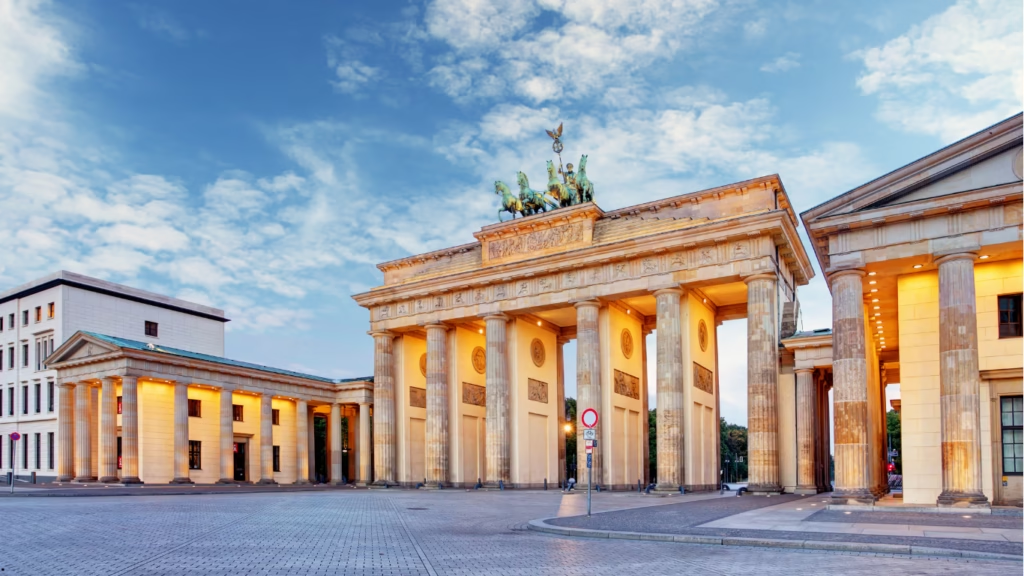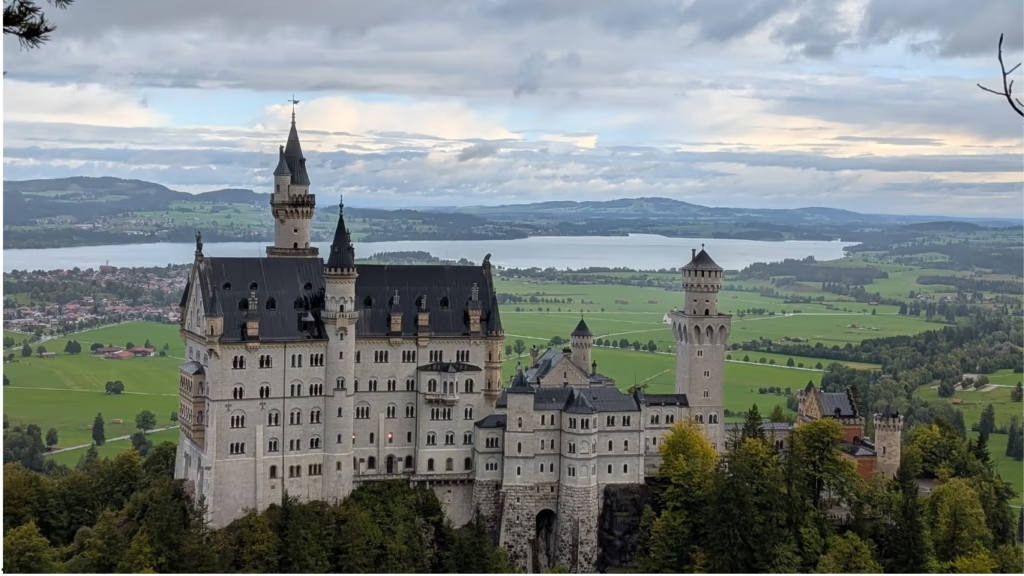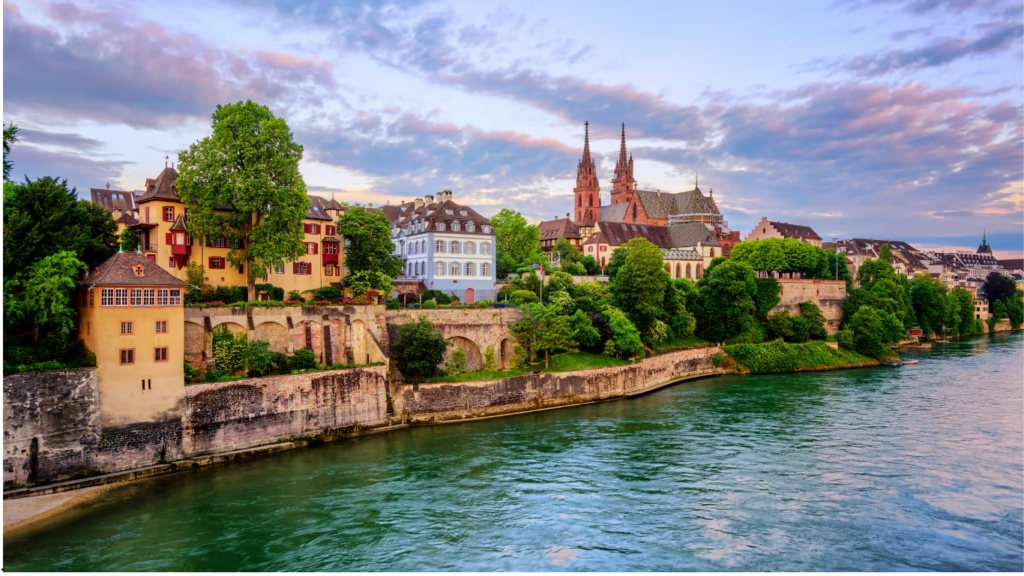Welcome to a journey through Germany, a land of enchanting fairy-tale castles, dense mystical forests, and vibrant modern cities. This comprehensive guide is your key to unlocking the rich history, engineering marvels, and passionate culture of this Central European powerhouse. From the historic streets of Berlin to the majestic peaks of the Bavarian Alps and the romantic Rhine Valley, Germany offers a travel experience that is both deeply historical and exhilaratingly contemporary.
Germany is a nation of impressive regional diversity, where each state, or “Länder,” has its own distinct traditions, dialects, and cuisines. Its well-connected network of high-speed trains, efficient public transport, and the legendary Autobahn makes it a surprisingly simple country to explore. Whether you are a history enthusiast, a nature lover, or a fan of cutting-edge technology and art, you will find an endless array of attractions to captivate your imagination.

Practical Information for Your Trip
Visa and Entry Requirements: Germany is a member of the Schengen Area, allowing visitors from many countries to enter without a visa for up to 90 days. However, it’s crucial to check the official German Federal Foreign Office website well in advance to confirm the specific requirements for your nationality. Ensure your passport is valid for at least three months beyond your planned departure from the Schengen Area.
Currency: The official currency is the Euro (€). Credit cards are widely accepted in cities and towns, especially in larger restaurants, hotels, and shops. However, it is always a good idea to carry some cash, particularly for small purchases at local markets, street vendors, or in more rural, cash-based establishments.
Tipping Culture: Tipping in Germany is customary but is not as high as in countries like the United States. A common practice is to round up the bill or add a tip of 5-10% for good service. It is considered polite to hand the tip directly to the server rather than leaving it on the table.
Getting Around: Germany has an exemplary public transportation system. Trains are an excellent way to travel between major cities like Berlin, Munich, and Frankfurt. Deutsche Bahn (DB) offers high-speed trains (ICE) that are fast and comfortable. For exploring the countryside and small towns, renting a car gives you the most flexibility to drive the famous Autobahn. Within cities, buses, trams, and metro (U-Bahn) systems are efficient and reliable.
Stay Connected with Spark Roam: Exploring Germany requires reliable connectivity, whether you’re navigating the sprawling cities, checking train schedules, or sharing photos of a medieval castle. A Spark Roam eSIM is the perfect solution. It offers seamless, high-speed data access without the hassle of a physical SIM card. Stay connected with ease and explore Germany with confidence. Use the Spark Roam Germany eSIM to stay connected on your next trip.
Top German Destinations and Regions
Germany is a diverse country with distinct regional cultures, from the historical North to the alpine South.
1. Berlin and Northern Germany: History and Modernity
Northern Germany is a region of maritime history, Hanseatic charm, and deep historical significance. Highlights:
- Berlin: The capital is a global hub of history, art, and nightlife. Visit the Brandenburg Gate, the remnants of the Berlin Wall, and the Reichstag Building. Explore the city’s vibrant street art and thriving creative scene.
- Hamburg: A major port city with a stunning harbor, the futuristic Elbphilharmonie concert hall, and a lively nightlife district.
- Cologne: Famous for its stunning Gothic cathedral, the Cologne Cathedral, and its vibrant carnival season.
- The Black Forest: A region of dense, evergreen forests, charming villages, and famous cuckoo clocks. It’s an ideal destination for hiking and outdoor activities.

2. Bavaria and Southern Germany: Alpine Beauty and Tradition
This is the region of fairy-tale castles, lush alpine landscapes, and deep-seated traditions. Highlights:
- Munich: The capital of Bavaria, known for its beer gardens, the annual Oktoberfest festival, and its proximity to the Alps.
- Neuschwanstein Castle: One of the most famous castles in the world, the inspiration for Disney’s Sleeping Beauty castle. It is a stunning sight to behold.
- The Romantic Road: A scenic route through picturesque medieval towns like Rothenburg ob der Tauber, which looks like it’s straight out of a storybook.
- Garmisch-Partenkirchen: A beautiful alpine resort town perfect for skiing in the winter and hiking in the summer.

3. The Rhine Valley and Western Germany: Vineyards and Fortresses
The Rhine Valley is a UNESCO World Heritage site, famous for its romantic landscapes, vineyards, and medieval castles. Highlights:
- Frankfurt: A modern financial hub with a beautiful historic center, the Römerberg, and a stunning skyline.
- The Rhine River: Take a leisurely river cruise to see the countless castles, quaint villages, and terraced vineyards that line its banks.
- Düsseldorf: A sophisticated city known for its fashion scene, modern architecture, and the beautiful Old Town.
- Trier: Germany’s oldest city, with well-preserved Roman ruins, including the Porta Nigra gate and an amphitheater.

Sample 10-Day German Itinerary: “Castles, Cities, and Culture”
This itinerary is perfect for a first-time visitor, combining the highlights of Berlin and Bavaria. All travel is done by train, which is the most convenient way to travel between these cities.
Day 1-4: Berlin
- Day 1: Arrive at Berlin Brandenburg Airport (BER) and take the train to your hotel. Spend the afternoon exploring the vibrant Mitte district and see the iconic Brandenburg Gate. End your day with a classic Berliner Currywurst.
- Day 2: A day for history. Visit the East Side Gallery to see the longest remaining section of the Berlin Wall. Afterwards, explore the Holocaust Memorial and the Reichstag Building.
- Day 3: Immerse yourself in the city’s cultural heart. Visit Museum Island, a UNESCO World Heritage site with five world-class museums. In the afternoon, explore the trendy neighborhoods of Kreuzberg or Prenzlauer Berg.
- Day 4: Take a morning walk to one of Berlin’s bustling markets, like the Turkish Market. Then, catch a high-speed train from Berlin Hauptbahnhof to Munich.
Day 5-7: Munich
- Day 5: Arrive in Munich. Settle in and spend the afternoon exploring Marienplatz, the city’s central square, and watch the Glockenspiel performance. End your day with a classic Bavarian dinner at a beer garden.
- Day 6: Spend the morning exploring the sprawling English Garden. In the afternoon, visit the Deutsches Museum, one of the world’s oldest and largest science and technology museums.
- Day 7: Take a day trip to the enchanting Neuschwanstein Castle. This full-day excursion will take you through stunning Bavarian landscapes.
Day 8-10: Frankfurt & Departure
- Day 8: Take a morning train from Munich to Frankfurt. Settle in and spend the afternoon exploring the city’s beautifully reconstructed Old Town and the Römerberg square.
- Day 9: Explore Frankfurt’s modern side with a visit to the Main Tower for panoramic city views. Afterwards, learn about the city’s rich history at the Städel Museum.
- Day 10: Before heading to Frankfurt Airport (FRA), take one last stroll along the Main River and enjoy a final German pretzel.
Essential Travel Tips
Master the Public Transport: German cities have excellent public transport systems. Get a day ticket or a transport card to make navigating the U-Bahn, S-Bahn, and buses easier and more cost-effective.
Understand the Laws: Germany has very strict rules regarding littering, jaywalking, and noise levels. Be respectful of local laws and customs.
Book in Advance: For popular attractions and train travel, booking online in advance can save you time and money. This is especially true for popular destinations and during peak tourist season.
Don’t Fear the Language: While most Germans, especially in tourist areas, speak English, learning a few basic German phrases like “Hallo,” “Danke,” and “Bitte” will be greatly appreciated.
Embrace the Beer Gardens: The beer garden is a central part of German culture, especially in Bavaria. Find a cozy one for a local brew and traditional German fare.

